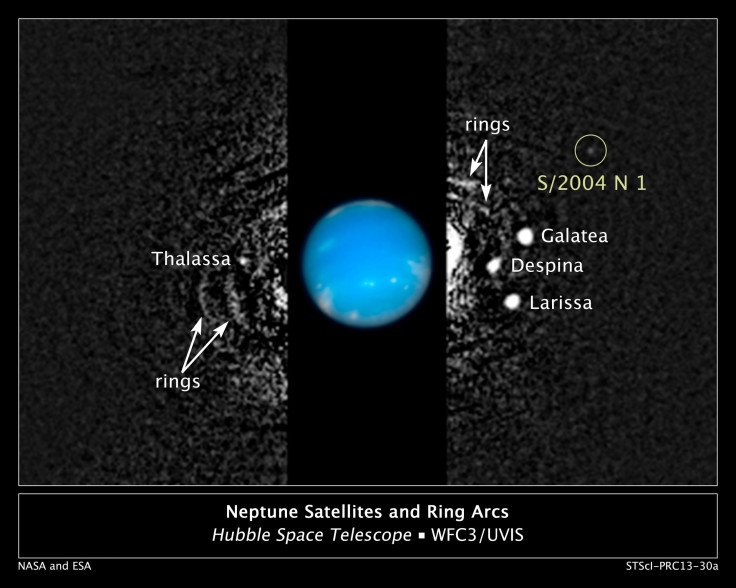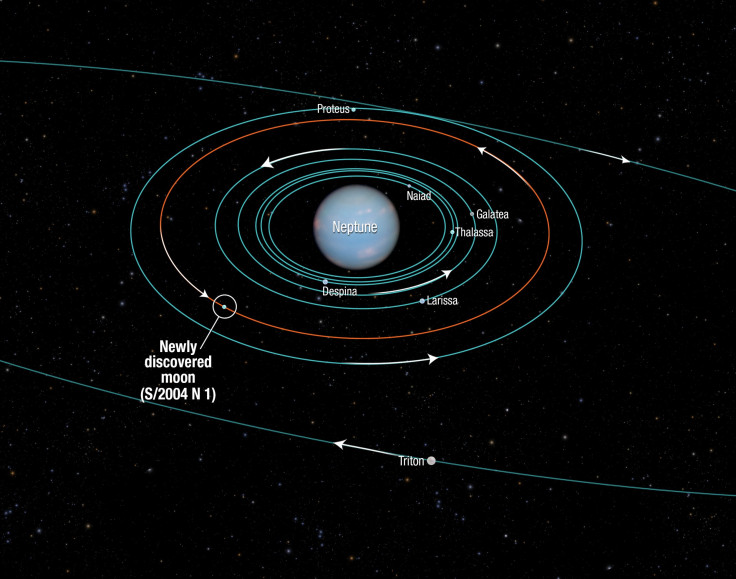NASA Hubble Telescope Discovers New Neptune Moon, Meet S/2004 N 1 [PHOTOS]
NASA’s Hubble Space Telescope has discovered a new Neptune moon. S/2004 N 1 is just 12 miles wide and is Neptune’s 14th moon.

Mark Showalter, from the SETI Institute, discovered the Moon in a series of images of Neptune’s rings, the NASA release notes. S/2004 N 1 is incredibly faint and the smallest of Neptune’s known moons. According to NASA, the moon is “100 million times fainter than the faintest star that can be seen with the naked eye.” The space agency also points out the moon was missed by the Voyager 2 spacecraft as it made its way past the planet in 1989.
Showalter described the process of discovering Neptune’s new moon as similar to that of motion blur when capturing sports imagery. Capturing an athlete in motion requires the photographer to focus on the athlete with a fast shutter speed, causing the background to blur. “The moons and arcs orbit very quickly, so we had to devise a way to follow their motion in order to bring out the details of the system,” Showalter said. The moon was seen in images captured by Hubble from 2004 to 2009.
In Showalter’s research, the rings of Neptune orbit quickly, and focusing on this fast-moving object cause the background of the image to blur. In 150 different images, a small white dot appears in the blurred background. The white dot orbits approximately 64,500 miles away from Neptune. S/2004 N 1 is nestled between Larissa, Neptune’s fourth largest regular moon, and Proteus, Neptune’s largest regular moon.

Triton is the largest of Neptune’s now 14 known moons but is considered an irregular moon due to its retrograde orbit, which travels in the opposite direction of Neptune’s rotation. Showalter traced a circular orbit, completing one revolution around Neptune every 23 hours, for S/2004 N 1. Triton was discovered in 1846, along with Neptune itself, while the 12 other moons were discovered by the Voyager 2 spacecraft in 1989.
The next step for S/2004 N 1 will be an official name, with a naming convention that links the moon to Neptune’s mythological origins. Pluto’s two most recently discovered moons, formerly P5 and P4, were officially named Styx and Kerberos by the International Astronomical Union.
© Copyright IBTimes 2024. All rights reserved.






















